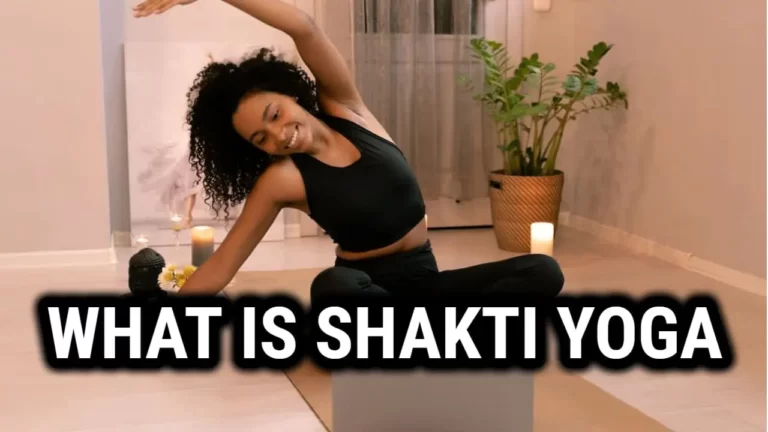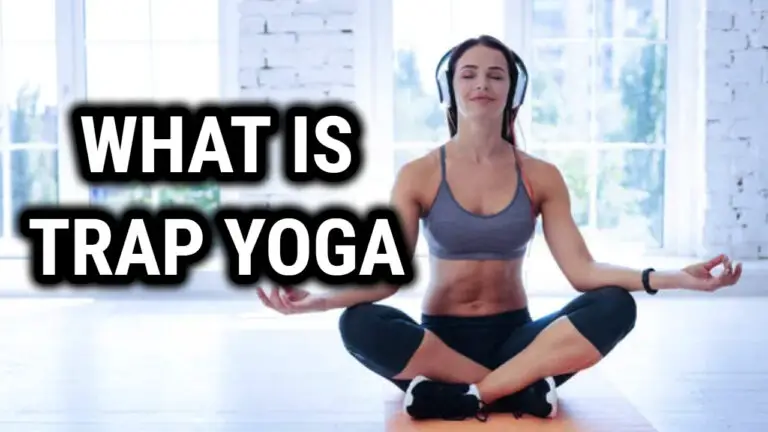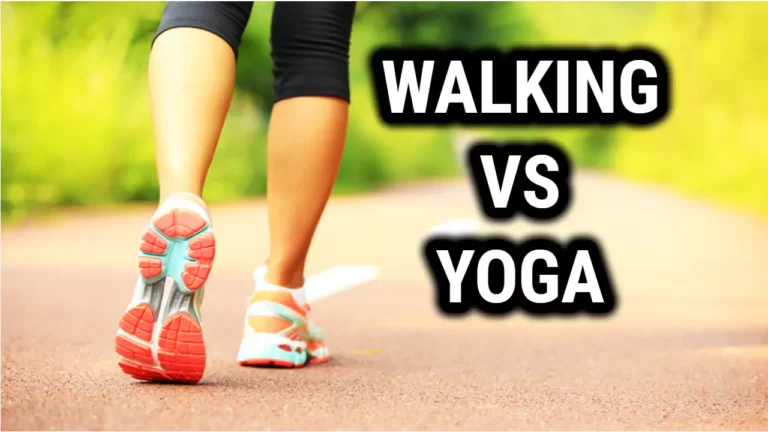Yoga Warm Up Poses For A Smooth Start

Yoga is a popular form of exercise that has been practiced for centuries. It is a great way to improve flexibility, strength, balance, and overall health. However, it is important to warm up properly before starting any yoga routine to prevent injury and get the most out of your practice.
Warm-up poses are an essential part of any yoga routine. They help to prepare the body for the more challenging poses that come later in the practice. Warm-up poses can be gentle and simple, or more dynamic and challenging, depending on the level of experience of the practitioner.
Some popular yoga warm-up poses include pelvic tilts, leg stretches, lizard pose, and downward-facing dog. These poses help to warm up the spine, activate the muscles, and lubricate the joints. Practicing these poses regularly can help to improve flexibility, increase range of motion, and reduce the risk of injury during yoga practice.
Why Warm Up is Important
Before diving into any physical activity, it’s important to properly warm up the body. This is especially true for yoga, which involves a wide range of movements that require flexibility and strength. A good yoga warm up routine can help to prevent injuries, increase flexibility, and prepare the mind for the practice ahead.
Benefits of Yoga Warm Up Poses
Yoga warm up poses offer a number of benefits that can enhance your overall practice. Some of the key benefits include:
- Increased Flexibility: By gently stretching the muscles and joints, yoga warm up poses can help to increase flexibility, making it easier to move into more challenging poses throughout the practice.
- Improved Circulation: Yoga warm up sequences encourage circulation, improving blood flow to all parts of the body. This can help to reduce inflammation, promote healing, and increase energy levels.
- Enhanced Mind-Body Connection: A good yoga warm up routine can help to prepare the mind for the practice ahead, promoting a sense of focus and calmness. This can help to enhance the mind-body connection, making it easier to stay present and focused throughout the practice.
- Reduced Risk of Injury: By gently preparing the body for the practice ahead, yoga warm up poses can help to reduce the risk of injury. This is especially important for those who are new to yoga or who have pre-existing injuries or conditions.
Overall, incorporating a yoga warm up routine into your practice can help to improve your overall experience, making it easier to move into more challenging poses and stay present throughout the practice.
How to Warm Up for Yoga
Before starting any yoga practice, it is important to properly warm up the body to prevent injury and prepare the muscles for the poses to come. Here are some basic and advanced yoga warm up poses to incorporate into your routine:
Basic Yoga Warm Up Poses
These poses are great for beginners and those new to yoga:
| Pose | Description |
| Child’s Pose (Balasana) | Kneel on the floor with your big toes touching and sit back on your heels. Stretch your arms out in front of you and rest your forehead on the mat. |
| Downward-Facing Dog (Adho Mukha Svanasana) | Start on your hands and knees with your wrists directly under your shoulders and your knees under your hips. Lift your hips up and back, straightening your arms and legs to form an inverted V shape. |
| Mountain Pose (Tadasana) | Stand tall with your feet hip-width apart and your arms at your sides. Engage your core and lift your chest as you take a deep breath in. |
Advanced Yoga Warm Up Poses
These poses are great for those with more experience in yoga:
- Half Sun Salutation: Start in Mountain Pose and lift your arms overhead as you inhale. Exhale and fold forward, placing your hands on the ground. Inhale and lift halfway up, lengthening your spine. Exhale and fold forward again before returning to Mountain Pose.
- Warrior I (Virabhadrasana I): Start in Mountain Pose and step your left foot back, turning it out at a 45-degree angle. Bend your right knee and lift your arms overhead, gazing up at your hands.
- Warrior II (Virabhadrasana II): From Warrior I, open your hips and arms to the side as you gaze over your front hand. Keep your back leg straight and strong.
By incorporating these yoga warm up poses into your practice, you can help prevent injury and prepare your body for a successful yoga session.
Tips for a Safe and Effective Yoga Warm Up
Before starting a yoga practice, it is essential to warm up the body to prevent injuries and prepare the body for the more challenging poses. Here are some tips for a safe and effective yoga warm up:
Breathing Techniques
Deep breathing is an essential part of any yoga practice, and it is especially important during the warm-up. Deep breathing helps to increase oxygen flow to the muscles, which prepares them for movement. Encourage students to take deep breaths in and out through the nose, filling up the lungs completely and exhaling fully.
Proper Alignment
Proper alignment is crucial during the warm-up to prevent injuries. Encourage students to focus on their alignment and engage their core muscles to protect their lower back. Remind them to keep their shoulders relaxed and away from their ears and to keep their neck in a neutral position.
Modifications for Injuries or Limitations
Not everyone has the same level of flexibility or mobility, and it is essential to offer modifications for students with injuries or limitations. Encourage students to listen to their bodies and not push themselves too hard. Offer modifications for poses that may be too challenging, such as using blocks or straps to assist with stretches.
By following these tips, students can have a safe and effective yoga warm-up that prepares them for a successful practice.
Warming Up Your Hamstrings
Before diving into a yoga session, it’s important to warm up your muscles to prevent injury and improve flexibility. The hamstrings, which run down the back of the thighs, can be particularly tight and prone to injury. Here are some effective yoga warm-up poses to help loosen and prepare your hamstrings for a deeper practice:
Downward Facing Dog
One of the most well-known yoga poses, Downward Facing Dog is an excellent way to warm up the hamstrings. Begin on all fours with your hands shoulder-width apart and your knees hip-width apart. Tuck your toes under and lift your hips up and back, straightening your arms and legs. Press your heels towards the floor and hold for 5-10 breaths.
Standing Forward Bend
Standing Forward Bend, or Uttanasana, is another great way to stretch the hamstrings. Start in a standing position with your feet hip-width apart. Exhale and fold forward from the hips, keeping your knees slightly bent if necessary. Let your head hang heavy and hold for 5-10 breaths.
Wide-Legged Forward Bend
For an even deeper stretch, try Wide-Legged Forward Bend, or Prasarita Padottanasana. Begin in a wide-legged stance with your feet parallel to each other. With your hands on your hips, inhale and lengthen your spine. Exhale and fold forward from the hips, bringing your hands to the floor or to blocks. Hold for 5-10 breaths.
By incorporating these simple yoga poses into your warm-up routine, you can help prevent injury and improve your overall flexibility. Remember to listen to your body and never push yourself too far beyond your limits.
Warming Up Your Wrist
Wrist pain and carpal tunnel syndrome are common issues for yogis, but there are several yoga warm-up poses that can help alleviate these problems. Before starting any yoga practice, it’s essential to warm up your wrists to prevent injury and ensure a safe and effective practice. Here are a few yoga warm-up poses that can help you warm up your wrists:
- Tabletop Wrist Stretch: Start on your hands and knees in a tabletop position. Rotate your hands so that your fingertips are pointing towards your knees. Slowly rock your body weight forward and backward, allowing your wrists to stretch and move through their full range of motion. Repeat this for several breaths.
- Wrist Circles: Extend your arms in front of you at shoulder height. Rotate your wrists in circles, moving clockwise and counterclockwise. Do this for several breaths, then reverse direction.
- Finger Stretches: Extend your arms in front. Spread your fingers wide apart and then bring them together. Repeat this several times, then interlace your fingers and stretch your hands forward.
These simple yoga warm-up poses can help you prepare your wrists for a safe and effective yoga practice. Remember to listen to your body and never force any movements that cause pain or discomfort. By taking the time to warm up your wrists, you can help prevent injury and enjoy a more comfortable and fulfilling yoga practice.
Also Read: Supine Yoga Poses: Relax Your Body and Mind with These Simple Exercises
Easing with Neck Stretches
Neck stretches are an excellent way to ease into your yoga practice and prepare your body for more intense poses. These stretches can help relieve tension in the neck and shoulders, improve circulation, and reduce stress. Here are a few neck stretches to try:
- Neck Rolls: Begin by sitting comfortably with your back straight. Slowly roll your head to the right, bringing your ear towards your shoulder. Continue rolling your head forward, bringing your chin towards your chest, and then roll your head to the left, bringing your ear towards your other shoulder. Repeat this movement several times, moving slowly and smoothly.
- Thread the Needle: Begin on your hands and knees, with your wrists under your shoulders and your knees under your hips. Reach your right hand under your left arm, placing your right shoulder and ear on the ground. Hold for several breaths, then repeat on the other side.
- Shoulder Shrugs: Begin by sitting or standing with your back straight. Inhale deeply, then exhale and shrug your shoulders up towards your ears. Hold for a few seconds, then release and repeat several times.
Remember to move slowly and smoothly, never forcing your body into any position. If you experience any pain or discomfort, stop the stretch and consult a yoga instructor or healthcare professional.
Stretching Your Side Body
Stretching the side body is an essential part of any yoga warm-up routine. It helps to increase flexibility and mobility in the spine, improve breathing, and reduce the risk of injury during the practice. Here are a few yoga poses that can help you stretch your side body:
- Extended Triangle Pose: This pose stretches the sides of the waist, opens the hips and chest, and strengthens the legs. Stand with your feet wide apart, turn your right foot out, and extend your arms to the sides. Reach your right hand towards your right foot and extend your left arm towards the ceiling. Hold for a few breaths and then switch sides.
- Gate Pose: This pose stretches the sides of the body, opens the chest, and strengthens the legs. Kneel on the floor, extend your right leg to the side, and place your right hand on your right thigh. Reach your left arm over your head and towards the right side of the room. Hold for a few breaths and then switch sides.
Remember to breathe deeply and relax into each pose. If you feel any pain or discomfort, come out of the pose and try again later. With regular practice, you will notice an improvement in your flexibility and overall well-being.
Related Read: Is Yoga Asanas Good for Curing Vertigo – Yoga for Vertigo
Conclusion
Yoga is a great way to improve physical and mental health, and incorporating warm-up poses into your practice can help you get the most out of your yoga routine. By taking a few extra mindful moments to move through some gentle stretches, you can prepare your body for the demands of your yoga class and reduce the risk of injury.
Remember, warming up before doing yoga can help you do better and be safer. The benefits of warming up before doing Yoga are that you’ll be able to perform better and be less prone to injury. Incorporating yoga warm-up poses into your practice can help you achieve your fitness goals and improve your overall well-being.






